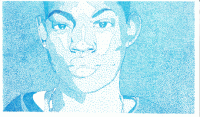Deeper Learning: Highlighting Student Work
Ron Berger, Chief Program Officer of the Expeditionary Learning schools, opens his portfolio of student work to demonstrate the immediate and longterm benefits of deeper learning.
Your content has been saved!
Go to My Saved Content.I travel with a heavy suitcase. Over my 35-year career as a public school teacher and educator at EL Education, I have been obsessed with collecting student work of remarkable quality and value. I bring this work with me whenever I visit schools or present at conferences and workshops, because otherwise no one would believe me when I describe it.
The student work in my giant black suitcase is exemplary—beautiful and accurate, representative of strong content knowledge and critical thinking skills—but it's not from "exceptional" students. It does not come from gifted and talented classrooms or from high-powered private schools. It's the work of regular students in typical schools around the country. The difference is that these students' teachers have helped them develop the skills and mindsets necessary to produce work of exceptional quality, and have built classroom and school cultures in which exceptional work is the norm.
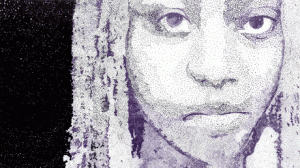
When I work with educators around the country and pull this work out of my suitcase, it changes the vision of what is possible when students are allowed, compelled and supported to do great things. The quality of the work itself is a game-changer. The fact that most of it comes from urban schools in low-income neighborhoods leaves most audiences astonished.
Every time I present this work and discuss it with teachers and school leaders, I reminded that the choices we make about how to use time in school are often the enemy of quality or value. Our patterns in leading classrooms are so ingrained that we do not even realize when we are making poor choices. Consider my own experience.
Seeking Value
In all of my years sitting in classrooms as a student, in public schools that were highly regarded, I never once produced anything that resembled authentic work or had value beyond addressing a class requirement. My time was spent on an academic treadmill of turning in short assignments completed individually as final drafts—worksheets, papers, math problem sets, lab reports—none of which meant much to anyone and none of which resembled the work I have done in the real world. Although I received good grades, I have no work saved from my days in school, because nothing I created was particularly original, important or beautiful.
Yet when we finish school and enter the world of work, we are asked to create work of value—scientific reports, business plans, websites, books, architectural blueprints, graphic artwork, investment proposals, medical devices and software applications. This work is created over weeks or months with team consultation, collaboration and critique, and it goes through multiple revisions. The research, analysis, and production involve multiple disciplines, such as reading, writing, mathematics, science, engineering and design.
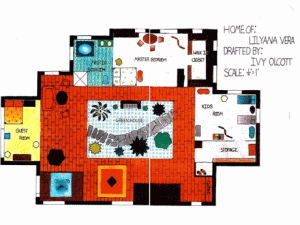
When will students develop the skills to do this kind of work if not in school? It's not just the reading and math skills; it's also the planning, problem solving and working collaboratively. When do we believe students will develop the dispositions to persevere over time with a challenging project and hold themselves to high standards of quality? These skills and mindsets—collectively known as Deeper Learning—can only be built through long-term practice in classrooms where students work together on significant projects.
With the help of my friend Steve Seidel at the Harvard Graduate School of Education and my colleagues at EL, I curated my collection of exemplary student work. You can see some of it in this post. If you find yourself hungry for more, they are available now as an open resource at the Models of Excellence.
Austin's Butterfly
Perhaps the most memorable piece of work I have collected in my career is a surprisingly small one: a drawing of a butterfly by a first grade boy named Austin from ANSER Charter School in Boise, Idaho. This scientific illustration for a notecard fundraising project is significant because Austin's growth between drafts is remarkable—thoughtful instruction led Austin through a progression from a primitive sketch to a scientifically accurate and stunning final illustration. The progression of quality itself is arresting, but even more important is its message: we often settle for low-quality work when, with perseverance and careful critique, we are capable of excellence.
Critique and Feedback: The Story of Austin's Butterfly from Expeditionary Learning .
The Greenprint
When people ask how urban high schools in our EL network manage to get every single graduate into college, there is no quick answer. Building school cultures where every student is well known, supported and compelled to create work of value is a big part of it. Students at the Springfield Renaissance School in Springfield, Mass. were trained by city engineers to do scientific energy audits of city buildings. Not only did these students produce a professional quality report—a "Greenprint" for the city—but the mayor also took their recommendations seriously, investing hundreds of thousands of dollars to renovate city buildings that immediately resulted in substantial savings of energy and funds. Doing this kind of professional and authentic work changed these students' outlook in a fundamental way. Though most came from families in which no one had attended college, they came to view college as a realistic and achievable goal, and developed the self-directed mindset they'll need to succeed there.
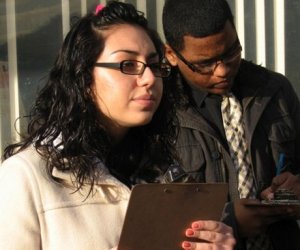
Snakes
Second grade students at Conservatory Lab Charter School in Boston created a professional quality children's book as part of their investigation of snakes. Inspired by Austin's Butterfly, they brought their writing and scientific illustration through many drafts to produce a dazzling final product. The music video that the students created to document their learning has created quite a sensation on YouTube—a rousing tribute to Lady Gaga titled "Snakes are Born This Way."
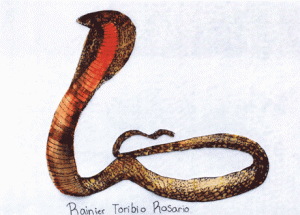
Once a student creates work of value for an authentic audience beyond the classroom—work that is sophisticated, accurate, important and beautiful—that student is never the same. When you have done quality work, deeper work, you know you are always capable of doing more.
